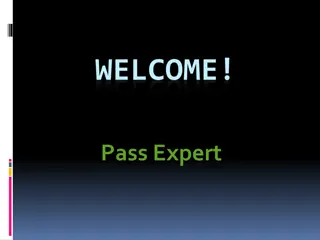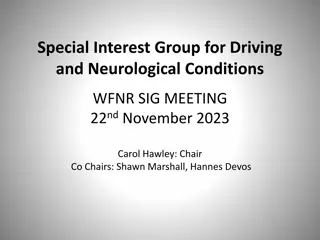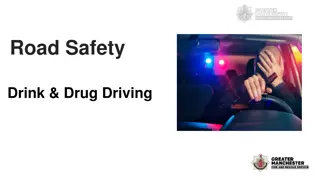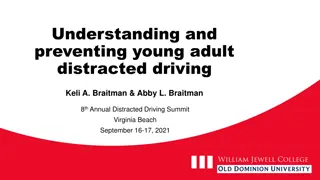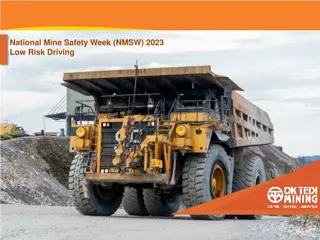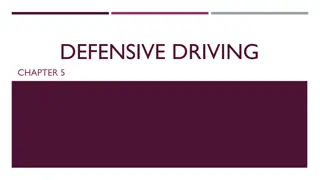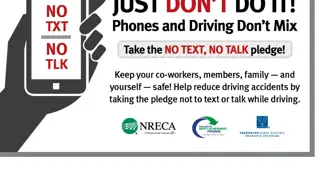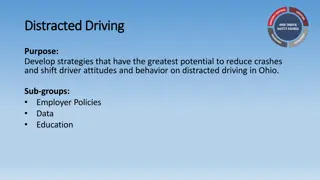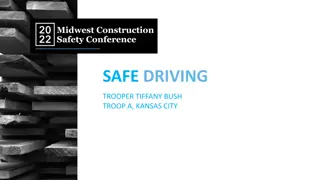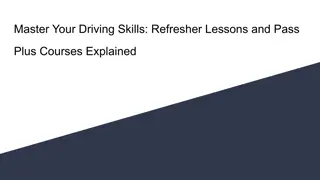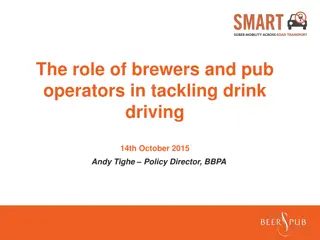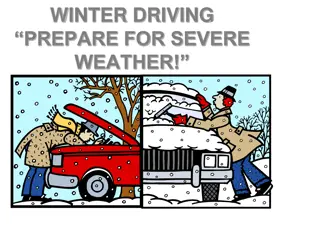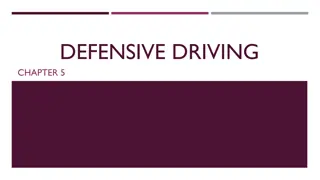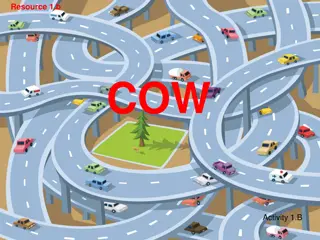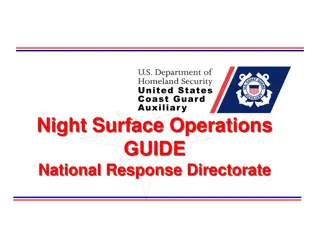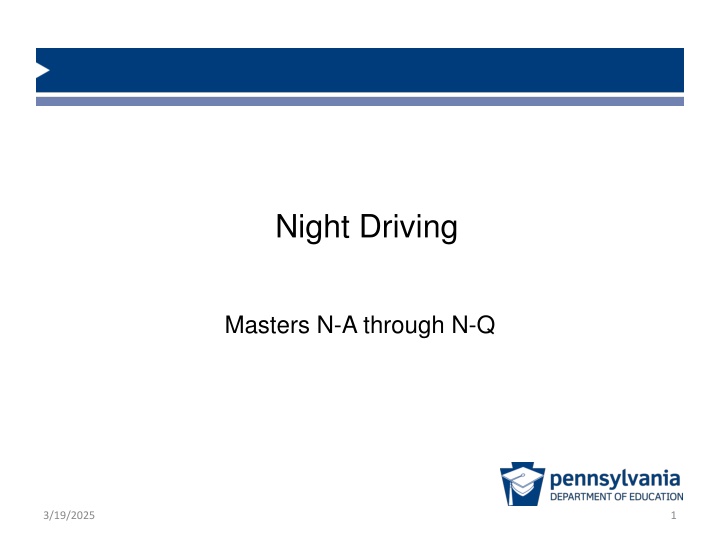
Mastering Night Driving: Tips and Techniques for Safe Driving After Dark
Explore the challenges and strategies for driving at night with this comprehensive guide. Learn about reducing glare, improving visibility, and enhancing safety when driving in low-light conditions. Understand the risks associated with night driving and discover essential pre-driving procedures to ensure a smooth and safe journey.
Download Presentation

Please find below an Image/Link to download the presentation.
The content on the website is provided AS IS for your information and personal use only. It may not be sold, licensed, or shared on other websites without obtaining consent from the author. If you encounter any issues during the download, it is possible that the publisher has removed the file from their server.
You are allowed to download the files provided on this website for personal or commercial use, subject to the condition that they are used lawfully. All files are the property of their respective owners.
The content on the website is provided AS IS for your information and personal use only. It may not be sold, licensed, or shared on other websites without obtaining consent from the author.
E N D
Presentation Transcript
Night Driving Masters N-A through N-Q 3/19/2025 1
Night Driving Objectives 1. Problems associated with night driving 2. Special pre-driving procedures for night driving 3. Visual searching techniques for night driving 4. Reducing glare associated with night driving 5. Reducing the risk of overdriving your headlights 6. Reducing the risk of certain maneuvers at night 3/19/2025 2
Night Time Death Date vs Day Time Death Rate Rural Areas 2 Times Greater Urban Areas 3 Times Greater 3/19/2025 3
Sight Distance At Night Low Beams High Beams Stationary Vehicle 150 feet 500 feet Vehicle at 30 mph 90 feet 300 feet 3/19/2025 4
Low Reflective Objects Any person, vehicle or animal that is adjacent to the roadway with little to no reflection is difficult to see beyond 70 feet. 3/19/2025 5
Slower Reaction Time At night, you can add anywhere from 1.5 to 2.0 seconds reaction distance to your normal reaction distance. Reaction Distance = Speed x 1.47 x Reaction Time x Night Reaction Time Normal Reaction Time Night Reaction Time, 1.5 .75 at 35 mph (Day) = 39 feet, at night = 58 feet .75 at 55 mph (Day) = 61 feet, at night = 91 feet 1.0 at 35 mph (Day) = 52 feet, at night = 77 feet 1.0 at 55 mph (Day) = 81 feet, at night = 121 feet 3/19/2025 6
Headlight Glare Approaching vehicle on low beam, maximum visibility is 200 feet When approaching vehicle is on low beam at 100 feet distance, the ability to see objectives adjacent to roadway is reduced Can be momentarily blinded for as long as 7 seconds Vehicles behind and alongside 3/19/2025 7
Depth Perception Estimating closing speed of oncoming vehicles and following distance Estimating closing speed of ongoing vehicles 3/19/2025 8
Search Patterns Need to fixate longer on objects Need to check edge of road 3/19/2025 9
Special Pre-Ignition and Ignition Procedures 1. Check Intended Path of Vehicle 2. Clean Windows and Lights 3. High/Low Beam 4. Panel Lights 5. Rearview Mirror 6. Side View Mirrors 7. Periodic Check of All Lights 3/19/2025 10
Special Search Techniques 1. Search to the limits of your headlights range 2. Periodically search beyond the range of headlights 3. Use the right lane edge line or fog line to help in positioning your vehicle 3/19/2025 11
Reducing Headlight Glare 1. Use right lane line with approaching vehicle 2. Adjust mirrors 3/19/2025 12
Reducing Risk of Overdriving Headlights 1. Increase your following distance 2. Use headlights of ongoing vehicles 3. Visual clues outside of lateral range of headlights 3/19/2025 13
Turns and Curves 1. Reduce Speed 2. Search beyond the lateral range of the headlights 3. Don t allow eyes to only follow headlight range 3/19/2025 14
Backing 1. Check intended path 2. Slow speed and look in direction 3/19/2025 15
Changing Lanes 1. Practice judging closing speed of vehicles from behind 2. Allow extra clearance 3/19/2025 16
Risks of Passing at Night 1. Limited range of headlights 2. Overdriving headlights 3. Other drivers inability to determine speed of closing *Reasons for passing at night seldom justify the risks 3/19/2025 17
Stopping Along Shoulder of Highway 1. Unless it is an emergency, Don t 2. As far off roadway as shoulders allow 3. Four-Way Flashers 4. Flairs or Reflectors 5. Safest Area for Passengers 3/19/2025 18
Contact/Mission For more information on the (the topic of the presentation) please visit PDE s website at www.education.pa.gov The mission of the Department of Education is to ensure that every learner has access to a world-class education system that academically prepares children and adults to succeed as productive citizens. Further, the Department seeks to establish a culture that is committed to improving opportunities throughout the commonwealth by ensuring that technical support, resources, and optimal learning environments are available for all students, whether children or adults. 3/19/2025 19


